UPSC Daily Current Affairs- 4th December 2023 | Current Affairs & Hindu Analysis: Daily, Weekly & Monthly PDF Download
GS-I
Mount Marapi
Subject: Geography
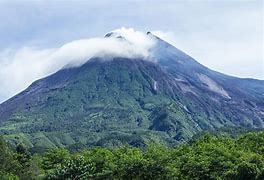
Why in News?
Recently, Indonesia’s Mount Marapi in West Sumatra province erupted, spewing white-and-grey ash plumes for more than 3,000 metres (about 9,800 feet) into the air.
About Mount Marapi:
- Not to be mistaken with Mount Merapi in Java, this Mount Marapi is located in West Sumatra.
- Its name means Mountain of Fire. With over 60 eruptions to its credit since the late 18th century, Marapi claims the title of the most active volcano in Sumatra.
Key points about the Pacific Ring of Fire
- It also known as the Circum-Pacific Belt,is a path along the Pacific Ocean characterised by active volcanoes and frequent earthquakes.
- Its length is approximately 40,000 kilometres (24,900 miles).
- It traces boundaries between several tectonic plates—including the Pacific, Juan de Fuca, Cocos, Indian-Australian, Nazca, North American, and Philippine Plates.
Source: Financial Express
Red Sea
Subject: Geography

Why in News?
A US warship and multiple commercial vessels were recently attacked in the Red Sea, deepening maritime tension in the Middle East.
About Red Sea:
- It is a semi-enclosed inlet (or extension) of the Indian Ocean between the continents of Africa and Asia. It is one of the world’s warmest seas.
- It is connected to the Arabian Sea and the Indian Ocean to the south through the Gulf of Aden and the narrow strait of Bab El-Mandeb.
- The northern portion of the Red Sea is bifurcated by the Sinai Peninsula into the Gulf of Aqaba and the Gulf of Suez, where it is connected to the Mediterranean Sea via the famous Suez Canal.
- Bordering Countries:
- Yemen and Saudi Arabia border the Red Sea to the east.
- It is bordered by Egypt to the north and west and by Sudan, Eritrea, and Djibouti to the west.
- This sea has a surface area of roughly 438,000 km2 and is about 2,250 km in length.
- The maximum width of the sea is 355 km, and the sea’s deepest point is 3,040 m at the central Suakin Trough, with the sea’s estimated average depth being 490 m.
- Islands: Some well-known islands include Tiran Island, which is located near the mouth of the Gulf of Aqaba, and Shadwan Island, which is located at the entrance of the Gulf of Suez.
Source: Times of India
India, disability inclusion and the power of ‘by’
Subject: Social Issues

Why in News?
The central idea underscores the need for a bottom-up approach, private sector engagement, and innovative models like the SPARK project to bring about attitudinal shifts, economic opportunities, and social recognition for persons with disabilities, ultimately fostering a more equitable and inclusive global development agenda.
Key Highlights:
- Disability Intersectionality: Disability intersects with social, economic, and gender vulnerabilities, necessitating comprehensive consideration for equitable action.
- Global Disability Statistics: Globally, 1.3 billion people live with disabilities, with 80% in developing countries and 70% residing in rural areas.
- Exclusionary Systems: Current systems designed for non-disabled persons lead to exclusion, resulting in higher instances of poverty, limited education access, and social discrimination for people with disabilities.
- Importance of Language: The distinction between “for” and “by” in disability inclusion is crucial. Inclusion should involve persons with disabilities in the process, not just for them.
- Economic Impact: Inclusion of persons with disabilities in the economy could boost global GDP by 3% to 7%, emphasizing the economic benefits of inclusion.
- Employment Scenario: Current employment scenarios limit job opportunities for persons with disabilities, contradicting the UN Convention on the Rights of Persons with Disabilities.
- Rural Challenges: Persons with disabilities in rural areas face heightened challenges, including limited access to education, employment, and exclusion from developmental schemes.
- UDID Card and Government Schemes: In India, UDID cards and various government schemes exist for persons with disabilities, emphasizing the need for awareness and last-mile connectivity of benefits.
- SPARK Project: The ILO and IFAD’s SPARK project focuses on disability inclusion in rural areas, with Disability Inclusion Facilitators (DIFs) leading awareness and engagement efforts.
Key Challenges:
- Awareness and Accessibility: Limited awareness and accessibility to government benefits for persons with disabilities, particularly in rural areas.
- Societal Perception: Persons with disabilities often face societal perceptions that view them as objects of charity rather than active participants in decision-making processes.
- Climate Calamities: Rural areas with high agricultural dependence face increased risks from climate calamities, further impacting persons with disabilities.
- Private Sector Engagement: While a robust legal framework exists, greater engagement with the private sector is crucial for promoting the employment of persons with disabilities.
Key Quotes:
- “For is often used when a person is receiving something and By is to identify the agent performing an action.”
- “Disability inclusion is rooted in assuring the rights of persons with disabilities and recognizing the economic benefits of inclusion.”
- “It is about time that the voices and needs of persons with disabilities be prioritized at the center of the global development agenda.”
Key Terms:
- Intersectionality: The interconnected nature of social categorizations such as disability, gender, and economic status, which creates overlapping and interdependent systems of discrimination or disadvantage.
- UDID Card: Unique ID for persons with disabilities, a card established as part of the Rights of Persons with Disabilities Act (2016) in India.
- Sustainable Development Goals (SDGs): A collection of 17 global goals set by the United Nations in 2015 as a universal call to action to end poverty, protect the planet, and ensure prosperity for all.
- Disability Inclusion Facilitators (DIFs): Individuals trained to engage with communities, raise awareness, and identify barriers to inclusion for persons with disabilities.
Key Phrases:
- Economic Consequences of Exclusion: Refers to the impact on the global GDP when excluding persons with disabilities from the workforce, as highlighted in the ILO study.
- Last-Mile Connectivity: Ensuring the final leg of delivery or accessibility of government benefits to the remotest areas, especially in the context of persons with disabilities.
- Social Development Dimension: Viewing disability inclusion not only as a matter of rights but also as a crucial aspect of social development.
Key Statements:
- “Disability as an identity and entity exists at the intersection of multiple vulnerabilities — social, economic, and gender — with each facet requiring careful consideration when conceptualizing action for equity.”
- “The inclusion of persons with disabilities into the economy can help boost global GDP between 3% to 7%, as per the study by the International Labour Organization.”
- “It is about time that the voices and needs of persons with disabilities be prioritized at the center of the global development agenda.”
Key Examples and References:
- The SPARK Project: Implemented by the ILO and IFAD, the SPARK project in Maharashtra demonstrates successful inclusion efforts led by persons with disabilities.
- International Labour Organization (ILO): Referenced for its study on the economic consequences of excluding persons with disabilities from the workforce.
- Rights of Persons with Disabilities Act (2016): Legislation in India that includes provisions for UDID cards and various schemes for persons with disabilities.
Key Facts:
- Global Disability Statistics: Approximately 1.3 billion people globally live with some form of disability, with 80% residing in developing countries.
- Rural Challenges: In India, 70% of persons with disabilities live in rural areas, facing greater challenges in accessing education and employment opportunities.
- Economic Impact: Inclusion of persons with disabilities in the workforce could boost global GDP by 3% to 7%, according to the ILO study.
Key Data:
- Percentage of Global Population with Disabilities: 1.3 billion people, equivalent to nearly the entire population of India.
- Percentage of Persons with Disabilities in Developing Countries: 80%, with 70% residing in rural areas.
- Impact on Global GDP: Inclusion of persons with disabilities can boost global GDP by 3% to 7%, according to the ILO.
Critical Analysis:
- Bi-Directional Link: Evidence shows a connection between disability, poverty, nutrition, and hunger, emphasizing the need for inclusive opportunities and employment in rural areas.
- Societal Perceptions: Persons with disabilities often face societal perceptions that view them as objects of charity rather than active participants in decision-making processes.
- Private Sector Engagement: The importance of engaging the private sector and building confidence in hiring workers with disabilities is highlighted.
Way Forward:
Prioritize the voices and needs of persons with disabilities at the core of the global development agenda for genuine inclusion and social justice. This involves awareness, engagement, and a bottom-up approach to disability inclusion, especially in rural areas.
Source: The Hindu
GS-II
National Pension System (NPS)
Subject: Polity and Governance
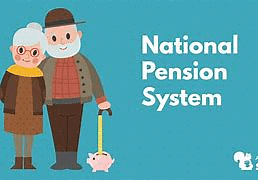
Why in News?
Recently, National Pension System (NPS) Investors Can Now Choose Multiple Fund Managers To Maximise Returns
Background:-
- The Pension Fund Regulatory and Development Authority (PFRDA) has issued new guidelines allowing National Pension System (NPS) subscribers to select up to three fund managers for various asset classes.
About NPS:-
- National Pension System (NPS) is a government-sponsored pension scheme.
- It was launched in 2004 for government employees.
- However, in 2009, it was opened to all sections.
- Implementation Agency: it is being implemented and regulated by
- PFRDA (Pension Fund Regulatory and Development Authority) – a statutory body established by the PFRDA Act, 2013.
Eligibility:-
- Any Indian citizen (Both Resident and Non-Resident) between 18 and 60 years can join NPS.
- The only condition is that the person must comply with Know Your Customer (KYC) norms.
- However, OCI (Overseas Citizens of India) and PIO (Person of Indian Origin) cardholders and Hindu Undivided Family (HUFs) are not eligible for opening of NPS account.
BENEFITS OF NPS:-
- NPS is a transparent and cost-effective system wherein the pension contributions are invested in the pension fund schemes and the employee will be able to know the value of the investment on a day-to-day basis.
- It is simple – All the subscriber has to do, is to open an account with his/her nodal office and get a Permanent Retirement Account Number (PRAN).
- It is portable – Each employee is identified by a unique number and has a separate PRAN which is portable i.e., will remain the same even if an employee gets transferred to any other office.
- It is regulated – NPS is regulated by Pension Fund Regulatory and Development Authority- External website that opens in a new window, with transparent investment norms & regular monitoring and performance review of fund managers by NPS Trust- External website that opens in a new window.
Source: Times Now
On Constitution Day, more people-friendly laws
Source: Polity
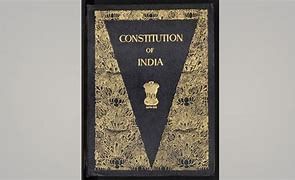
Why in News?
The Indian government, led by Prime Minister Narendra Modi, is actively simplifying legal language to promote “Access to Justice,” making legal texts more understandable for every citizen. This strategic initiative, aligned with constitutional principles, addresses historical ambiguities and leverages technology to enhance accessibility, contributing to global legal recognition and fostering a transformative journey toward inclusive justice.
Key Highlights:
- Legal Language Simplification: The Indian government, led by Prime Minister Narendra Modi, is undertaking a mission to simplify legal language, aligning with the vision of “Access to Justice” and aiming to make legal texts more accessible to the common citizen.
- Constitutional Principle: The initiative reflects the constitutional principle that legal language should be understandable to every citizen, emphasizing the importance of ensuring citizens comprehend their rights and responsibilities.
- Correction of Ambiguities: The government is addressing historical ambiguities in legal language, such as those in Sections 213 and 214 of the IPC, to enhance legal precision and effective enforcement, eliminating potential loopholes.
- Global Recognition: The government’s commitment to simplifying legal language has gained international recognition, positioning India as a forward-thinking adopter of progressive measures for legal accessibility.
- Digital Transformation: The simplification efforts align with the Digital India campaign, leveraging technology to enhance accessibility, with online platforms and digital resources making legal information more readily available.
Key Challenges:
- Historical Complexities: Addressing historical intricacies in legal language poses a challenge, requiring thorough examination and correction of ambiguities that have persisted over time.
- Public Engagement: While seeking public input in the simplification process is a positive step, ensuring effective public engagement and capturing diverse perspectives can be challenging.
Key Phrases:
- Access to Justice: The overarching vision guiding the simplification initiative, aiming to remove barriers of legal complexity that hinder the common citizen’s understanding of legal texts.
- Legal Empowerment: The goal of simplification extends beyond language, aiming to empower citizens with legal knowledge, fostering a sense of legal empowerment among the diverse population.
Key Quotes:
- “We must see that the constitution is not only passed by the Constituent Assembly but that it is also worked by the common people of the country.” – B R Ambedkar
- “The government envisions a legal landscape where language is not a barrier but a bridge to justice.”
Critical Analysis:
- The reduction in legal disputes due to misunderstandings and misinterpretations underscores the positive impact of the simplification initiatives in fostering a clearer legal framework.
Way Forward:
- Continue the integration of plain language drafting principles into legal education to nurture a generation of legal professionals capable of navigating legal intricacies with clarity and precision.
- Sustain efforts to engage the public in the simplification process, ensuring diverse perspectives are considered for comprehensive legal accessibility.
- Monitor and evaluate the impact of simplification on reducing legal disputes and enhancing India’s global economic competitiveness.
- Explore additional measures, such as comprehensive glossaries in multiple languages, to further enhance the understanding of legal language among citizens.
Source: The Hindu
Pratap Bhanu Mehta writes: How Henry Kissinger tricked the world
Source: International Relations

Why in News?
Henry Kissinger’s enigmatic legacy, spanning 80 years, encapsulates both admiration and criticism, depicting him as a “miracle man” and a “confidence man.” His influence on post-World War II global affairs prompts reflection on the intricate dynamics of power and diplomacy, posing ethical questions about leadership.
Key Highlights:
- Henry Kissinger’s Impact: Henry Kissinger, a pivotal figure in post-World War II global affairs, has left an indelible mark, often hailed as a “miracle man” but critiqued as a “confidence man.”
- Confidence Man Persona: Described as immensely talented and charming, Kissinger projected an aura of indispensability, successfully ingraining himself in the power structures globally for nearly 80 years.
- Ambiguous Morality: The term “confidence man” encapsulates Kissinger’s ability to project charm while potentially having a morally hollow core, raising questions about the ethical dimensions of his actions.
- Longevity and Influence: Despite controversies and criticisms, Kissinger’s influence endured, evident in his 100th birthday gala hosting the world’s elite and maintaining access to leaders like President Xi even in his later years.
Key Challenges:
- Moral Ambiguity: Kissinger’s approach to power and diplomacy raises ethical concerns, as he seemed more inclined towards realpolitik and a will to power than moral considerations.
- Impact on Global Conflicts: The decisions and actions condoned by Kissinger, such as the delayed peace agreement in Vietnam and support for controversial military interventions, are linked to significant human suffering and casualties.
Key Phrases:
- Confidence Man: A term used to characterize Kissinger’s charismatic yet potentially morally questionable persona, emphasizing his knack for presenting himself as indispensable.
- Will to Power: Kissinger’s approach to diplomacy is seen as a will to power, prioritizing the acquisition and maintenance of power as a measure of success.
Key Quotes:
- Eqbal Ahmad’s Assessment: “Kissinger was not a miracle man. He was a confidence man.”
- Kissinger’s Perspective: “There are two kinds of realists: Those who manipulate facts and those who create them.”
Key Examples and References:
- Crimes and Controversies: Kissinger’s involvement in delaying the Vietnam Peace Agreement, bombing of Cambodia, ignorance of the East Pakistan genocide, and support for interventions like in East Timor and Argentina.
- Greg Grandin’s Estimate: Historian Greg Grandin approximates around four million deaths attributable to Kissinger’s decisions.
Critical Analysis:
- Moral Objectivity: Kissinger’s approach challenges the conventional moral objectives associated with realism, portraying power as the ultimate measure of success.
- Survival Mentality: The analysis suggests that Kissinger’s worldview was shaped by a fear of powerlessness, instilled by the European experience, driving him to prioritize power at any cost.
Way Forward:
- Reflection on Morality: Evaluating the moral implications of diplomatic actions, emphasizing a balance between realism and ethical considerations in global affairs.
- Global Accountability: Reflecting on Kissinger’s legacy prompts a broader discussion on holding powerful figures accountable for decisions that impact millions of lives.
Source: Indian Express
GS-III
Buoy
Subject: Science and Technology
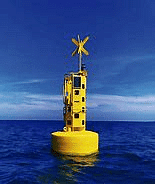
Why in News?
A wave rider buoy, equipped with GPS and various weather-related instruments, was recently found ashore at the Gopalpur Military Station in Ganjam district, Odisha.
About Buoy:
- A buoy is a floating object anchored at a definite location to guide or warn mariners, to mark the positions of submerged objects, or to moor vessels in lieu of anchoring.
- Buoys are often brightly coloured and have distinctive shapes or patterns, making them easily visible to ships and other watercraft.
- Buoys are commonly found in harbours and ports, along coastlines, and in rivers and lakes.
- They are maintained by various organisations, such as the Coast Guard and other navigational authorities.
- Buoyage system:
- For the sake of maintaining uniformity in buoyage systems worldwide, the International Association of Marine Aids to Navigation and Lighthouse Authorities (IALA) divided the world into two regions: Region A and Region B.
- Region A includes Europe, Australia, New Zealand, Africa, the Gulf, and some Asian countries, whereas Region B comprises North, South, Central America, Japan, Korea, and the Philippines.
- IALA proposed a system allowing the use of lateral marks in each region, but in Region A, the colour red of the lateral system is used to mark the port side of channels and the colour green for the starboard side.
- In Region B, the colours are reversed.
- Special-purpose buoys are designed for a variety of uses; they include cable buoys, anchor buoys, or race buoys.
- A mooring buoy differs from other types in that it is not an aid to navigation but a point to which vessels may be tied up.
What are starboard side and port side?
- The port side is the ship’s left side when looking forward towards the bow of the ship.
- The starboard is on the right side of the ship when facing the bow.
- The bow is the part of the ship that is generally most forward when the ship is moving. The stern is the back of the ship or its aft-most part.
Source: Indian Express
Cosmic Vine
Subject: Science and Technology
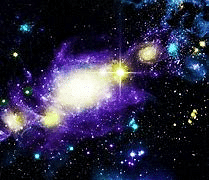
Why in News?
Recently, James Webb Space Telescope recently discovered the ‘Cosmic Vine’ of 20 connected galaxies in the early universe.
Background:-
- Astronomers using James Webb Space Telescope (JWST) data have discovered a massive chain of at least 20 closely packed galaxies from the early universe, and it could reveal insight into how the most massive structures in the cosmos form.
About Cosmic Vine:-
- Cosmic Vine is a massive “vine-like structure” that encompasses 20 galaxies and stretches for over 13 light years.
- Galaxies are immense systems in space containing stars, stellar remnants, interstellar gas, dust, and dark matter, all held together by gravity.
- It’s also very ancient.
- The researchers pegged it at redshift 3.44, meaning it’s situated in the early universe.
- A redshift of 3.44 would mean light from the Cosmic Vine has been travelling for between 11 and 12 billion years before reaching JWST.
- It harbours two of the most massive galaxies ever discovered at such a high redshift—Galaxy A and Galaxy E, both in a quiescent state, indicating a reduced rate of star formation.
Unique Characteristics:-
- It is exceptionally lengthy and vast, surpassing the size of other known compact galaxy groups at similar redshifts.
- It contains two of the most massive galaxies ever discovered at such high redshifts (Galaxy A and Galaxy E), both in a quiescent state, implying reduced star formation rates.
Significance:-
- It offers new perspectives on the formation and evolution of massive galaxies.
- It suggests that massive quiescent galaxies can form within expanding large-scale structures, contrary to some earlier models.
Source: DTE
|
38 videos|5264 docs|1112 tests
|
FAQs on UPSC Daily Current Affairs- 4th December 2023 - Current Affairs & Hindu Analysis: Daily, Weekly & Monthly
| 1. What is the significance of Mount Marapi? |  |
| 2. What is the Red Sea known for? |  |
| 3. How does India promote disability inclusion? |  |
| 4. What is the National Pension System (NPS)? |  |
| 5. What is the significance of Constitution Day in relation to people-friendly laws? |  |





















